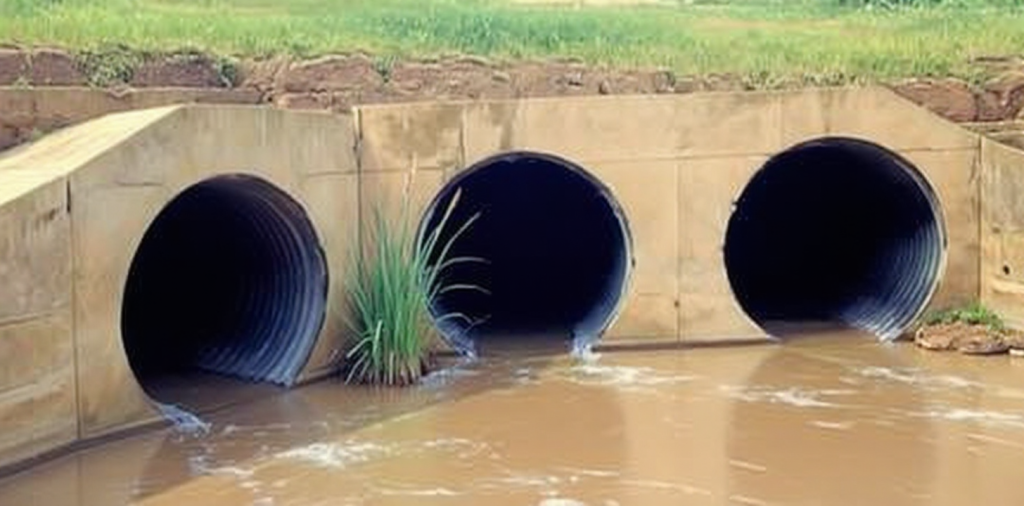Every effective drainage system depends on moving water safely from one side of an embankment or roadway to the other. That process relies on buried conduits—whether a concrete culvert pipe, a box culvert, or modular precast concrete sections—designed to handle expected flow rates without compromising structural integrity. Proper sizing is not only about hydraulics; it’s about delivering a system that functions for the long term while protecting surrounding infrastructure.
Conveyance and Hydraulic Function
The fundamental role of a buried conduit is to maintain uninterrupted water flow. A small private drive might need nothing more than an 18 inch culvert pipe, while municipal projects could call for concrete box culverts or large-diameter drainage pipe. Selecting the correct size requires balancing project requirements, anticipated flow capacities, and the surrounding environment.
Material choice also affects performance:
- Reinforced concrete offers unmatched strength for high-load applications.
- Galvanized steel provides a lighter-weight option for temporary or cost-sensitive projects.
- Stainless steel aluminum is ideal where high corrosion resistance is necessary.
- Concrete pipe and modular precast concrete pieces offer consistency, durability, and ease of installation.
This wide variety of options allows engineers to adapt systems to both simple and complex sites.
Outlet Protection and Energy Dissipation
A pipe is only as effective as its outlet. Poorly managed discharge points can accelerate erosion, clog downstream channels, and damage adjacent land. To prevent these issues, protective measures are integrated at the exit.
- Drain grates keep small debris from entering the system.
- A trash rack or culvert trash rack blocks larger branches and logs before they obstruct the line.
- Outlet aprons, riprap, or plunge pools reduce velocity, dispersing energy before it reaches natural channels.
By combining these features, designers extend the lifespan of both the pipe and the receiving channel.
Sizing for Site-Specific Conditions
Improper sizing is one of the leading causes of failure in underground conduits. If installed too shallow or too deep, pipes can either restrict flow capacities or fill with sediment, leading to costly maintenance. Engineers follow a staged process:
- Hydraulic analysis: determining expected flow rates from upstream drainage.
- Elevation setting: aligning the invert with natural grades to preserve habitat and reduce scour.
- Structural checks: ensuring soil cover and loading conditions are compatible with the chosen material, whether reinforced concrete, galvanized steel, or stainless steel aluminum.
These steps ensure each installation is properly designed to handle both everyday conditions and extreme storm events.
Materials and Customization
Contractors can choose from a wide range of materials and configurations to match their needs:
- Concrete culverts near me provide strength and local availability.
- Concrete pipe and concrete box culverts handle heavy-duty municipal projects.
- Precast concrete sections allow faster installation with consistent quality.
- Custom sizes available upon request provide flexibility for unusual project requirements.
Modern options are also engineered to be resistant to corrosion, ensuring that installations remain reliable in aggressive soil or water chemistry.
Commitment to Quality in Drainage Systems
Delivering dependable performance means combining accurate measurement, correct material selection, and protective features like trash racks and drain grates. Whether using an 18 inch culvert pipe for a driveway or a network of concrete box culverts for a highway project, success depends on attention to detail and a clear commitment to quality.
By choosing from a wide variety of materials—reinforced concrete, stainless steel aluminum, or galvanized steel—and ensuring systems are designed for precise flow capacities, contractors can create drainage solutions that stand the test of time.

